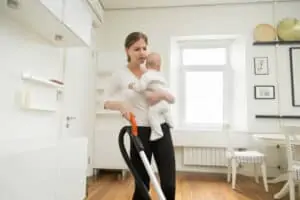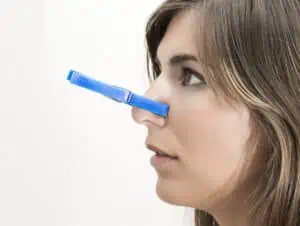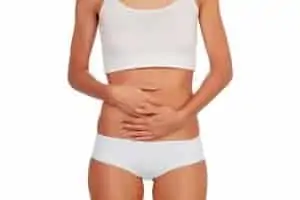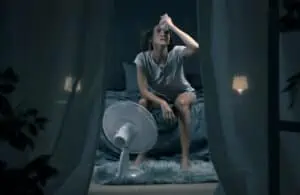When you spend time preparing for your baby’s arrival and creating the cutest wardrobe, don’t forget to stock up on some postpartum must-haves. You spend all of your time caring for your baby, feeding, and changing diapers around the clock; you must take care of yourself in the weeks following childbirth.
Some postpartum essentials differ based on whether you had a vaginal birth or a c-section since each comes with a different range of potential problems and symptoms. However, there are some standard experiences that all women will have regardless of how they gave birth.
As a mom with four kids, I’m familiar with the postpartum period, and I have a good idea about what items will help you through these weeks. So, be kind to yourself, and invest in a solid postpartum care kit with some must-have items.
Postpartum Essentials for All Women
Some items are just a necessity, no matter how you give birth. Whether you have a vaginal birth or a c-section, it’s still a lot for your body to handle, and we all have the same internal wound that needs to heal after delivery.
Here are some items that you need to grab to be prepared.
Maxi Pads
When you have a baby, the placenta detaches from the uterine walls, leaving a wound. As your uterus continues to heal and sheds the lining, you experience postpartum vaginal bleeding called lochia.
Lochia is like a more extended, heavier version of your menstrual cycle. Some women experience bleeding for six weeks, but the heaviest bleeding typically occurs for the first 3 to 10 days. Then, you’ll have light bleeding for the next four to six weeks.
You must have maxi pads for at least the first two weeks during the heaviest bleeding. Then, you can switch to smaller pads. Tampons are not safe to use while you have lochia; they could introduce bacteria, leading to a uterine infection.
I prefer to grab a bag of Always Maxi Overnight Pads with Wings. Great, the unscented version – I’ve found that my skin is more sensitive after having a baby, potentially due to all the rapid hormonal changes. You might need two bags, and then you can switch to the standard pads you use during your menstrual cycle.
Mesh Underwear
When you deliver at the hospital, they provide you with pairs of mesh underwear, and the hospital typically provides you with several pairs. It prevents all of the heavy postpartum bleeding from ruining your typical underwear.
The hospital can give you a few extra pairs before you leave, but I suggest you grab extra mesh postpartum underwear. The Hansilk brand is washable and stretchy, plus the underwear comes in multiple sizes.
Peri Bottle
Some people might argue with me and say that a peri bottle is only needed for vaginal birthing mothers, but as a mother who has had four c-sections, I can tell you that you’ll still have discomfort on your bottom. All the bleeding down there makes your vagina and bottom region sore, so using a peri bottle is a simple solution.
The hospital gives you a basic peri bottle, but I prefer the Frida Mom Upside Down Peri Bottle. Trying to get the typical peri bottle to spray upside down is hard, so Frida Mom took that concern away.
If anything, you’ll know you’re as clean as possible down there. Since you bleed quite a bit, cleaning well each time reduces irritation and smells that could develop from lingering blood.
Stool Softeners
Many think stool softeners are just for c-section mothers, but no one needs to strain or worry about bothering their stitches.
Having a bowel movement can be scary after you have your baby! For c-section mothers, it feels like you’re about to break open your abdominal incision. For a vaginal birthing mom, you might worry that you’ll damage your vaginal stitches.
Keep stool softeners on hand. Most hospitals provide stool softeners while you stay there, but you need some on hand when you go home. A great brand you could try is Dulcolax, a soft gel tablet. These are OBGYN recommended, and they’re safe for breastfeeding as well.
Breastfeeding Bras
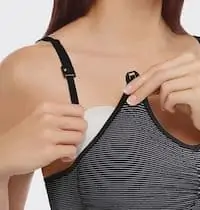
If you’re planning to breastfeed, you’ll want a few comfortable, well-fitting nursing bras. They’re a staple in any postpartum wardrobe, especially since your breasts will turn into hard, engorged footballs before long.
Note that…
At first, you’ll want some soft bras that are cotton, which feels considerably better on cracked, sore nipples. I prefer to wear sleeping bras when I’m home, which makes nursing easier, but it also gives your support and holds in nursing pads because you will leak.
Check out the Cakye Nursing Bra for sleep. These cotton nursing bras come in a three-pack – the price is perfect, and they’re uncomfortable!
Cooling Nursing Pads
For the first few weeks, your nipples will be sore, cracked, and uncomfortable, plus they’ll be hot. Engorgement always made my breasts sweat and feel nasty.
The solution to this problem is to use cooling nursing pads. I prefer the Lansinoh Soothies Gel Pads, which provide inside cooling relief. These pads help to soothe and heal your sore nipples. You can store them in the refrigerator until it’s time to use them, and they can be reused for up to 72 hours!
Nursing Pads
If you decide that you do want to breastfeed, you’ll need a few boxes of nursing pads. You can find several awesome brands of nursing pads on the market, and the most popular is the Lansinoh.
These nursing pads have a waterproof lining to prevent them from leaking onto your bra. They also have a stay-dry liner, so your nipples don’t feel wet the entire time. It’s recommended that you change your nursing pads regularly to prevent irritation and a thrush infection.
Nipple Cream
During the first few weeks of breastfeeding, your nipples will be sore and potentially cracked. Using nipple cream can make even the sorest nipples feel better.
Like nursing pads, you can find several brands of nipple cream. As a personal preference, I stay away from lanolin-based creams because they need to be wiped off before you breastfeed your baby. My favorite is the Organic Nipple Butter by Earth Mama. Not only does it smell delicious, but it goes on smoothly and helps to promote the healing of sore nipples.
Postpartum Must-Haves for Vaginal Deliveries
If you had a vaginal birth or plan to do so, ensure you include them in your postpartum care kit!
Dermoplast Pain & Itch Spray
Moms who have had vaginal deliveries swear by Dermoplast Pain & Itch Spray. It contains benzocaine, aloe, lanolin, and menthol. Together, these ingredients help soothe and moisturize your skin while reducing pain. Plus, healing itches and the last thing you want to do is itch your healing vagina.
You can talk to your doctor about using Dermoplastic Pain & Itch Spray, or he might have another suggestion for a cream or ointment to reduce your perineal pain.
The remarkable thing is that you can use Dermoplast after your postpartum stage is done. It works on scrapes, cuts, burns, and insect bites. A little goes a long way with this stuff!
Sitz Bath
Sitting in a sitz bath for 15-20 minutes daily can help ease perineal pain during your postpartum phase. It helps to relax muscles, soothe soreness, and reduce itchiness. Plus, it promotes healthy healing by increasing blood flow while keeping the area clean.
However, a new mom has the time to run a bath and sit in each day when they have a new baby to take care of. Instead, try the Sitz Bath for Toilet Seats by Soothic, which sets inside your toilet. That makes it so much easier and faster! You can save this later because sitz baths work great for hemorrhoids.
This is interesting:
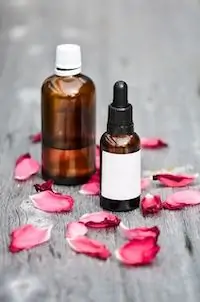
Many mothers like to take sitz baths that use Epsom salt, witch hazel, lavender, or chamomile oil. Evidence is out on whether they genuinely help with healing, but they can increase the relief. Most mothers will tell you that lavender is even more soothing.
Moms rave about the Thena Natural Wellness organic sitz bath for postpartum care. It is made with a mixture of pure Epsom salt, Dead Sea salt, witch hazel, lavender essential oil, and calendula to promote healing.
Tuck Pads
Hemorrhoids are an unfortunate side effect of a vaginal delivery. They can leave you feeling sore and uncomfortable during your healing process. One of the things that postpartum moms love is Tucks Medicated Pads; you can use them even if you aren’t postpartum.
These pads are made with witch hazel, and you can use them to help heal your hemorrhoids. I prefer the cooling ones as well because they provide immediate relief from burning and itching. Then, at the same time, they protect and soothe those irritated areas.
Perineal Cooling Pad
Your perineum will not be comfortable for the first few days after childbirth. A cooling pad every few hours for the first week helps reduce swelling and discomfort.
Sure, you can try to sit on an ice pack or a bag of frozen peas, but finding a comfortable way to do that is half of the bottle. Instead, genius mothers knew what we needed and came to the rescue, providing postpartum mothers with the necessary healing items.
This one from Frida Mom is a fantastic choice. These liners cover the full length of most pads and help reduce swelling, giving instant cooling relief in your perineal area. They don’t use harsh chemicals that could cause a reaction, relying instead on medicated witch hazel.
Postpartum Must-Haves for C-Section Deliveries
For breastfeeding mothers, make sure you have these items at home before returning to make your life easier and promote faster healing.
Belly Binder
It’s easy to forget that a c-section is a major surgery that cuts your abdominal muscles. You don’t realize how often you use those muscles until it hurts to do so — wearing a belly binder or an abdominal binder after a c-section gives your support and compression. For many women, it’s the best way to stay comfortable during recovery.
Here is my choice:
Moolida postpartum belly wrap is an excellent choice for c-section moms. They offer multiple sizes to help you find the right one for your body, and all the wraps are made of 100% skin-friendly medical-grade cotton. It’s lightweight, perfect for wearing under clothing. This brand is made for c-section recovery, so you can be sure it supports in all the right places.
Breastfeeding Pillow

Even if you aren’t breastfeeding, having a pillow can be useful when recovering. If you have another child at home, particularly a toddler who doesn’t understand major surgery, the pillow acts as a blocker from little knees or elbows as your child climbs on top of you.
I prefer this nursing pillow from Boppy, which helps to support your arms while nursing and holding your baby. It also can be used later to help your baby with tummy time or as a supported sitter. So, it’s a worthwhile purchase even if you don’t plan to breastfeed.
High Waisted Underwear
The last thing you want is the waistband of your panties rubbing on your incision. Not only could that damage or rib out stitches, but it also could cause severe discomfort.
Make sure you have several pairs of high-waisted underwear. The ones with a wide waistband made with double-layer fabric are ideal, such as this one from UMMISS. These are full coverage, soft, comfortable briefs that come in a multipack for an affordable price tag.
UMMISS uses a double-layer fabric waistband that fits snuggish, which can help to hold your pad in place. This underwear even has a wider crotch to support pads. The high-waisted design provides tummy support, while the cotton fabric offers breathability and comfort.
Take Care of Your Postpartum Self
Focusing solely on your baby is easy, but your body underwent significant changes and needs care. Make sure you don’t forget about yourself, and create a postpartum self-care kit at home with all of the items required to ensure you feel as good as possible after having your baby!
Hey, this is Linda. My biggest accomplishment in life is being a mother of four children. Their current ages range from almost ten years old down to 20 months old.
I’m passionate about writing parenting articles because I understand so well all of the problems and trials you face as a parent. From breastfeeding woes to budgeting problems and behavior problems, along with everything in between, chances are I’ve faced it over the last ten years. Read more about Linda here.

